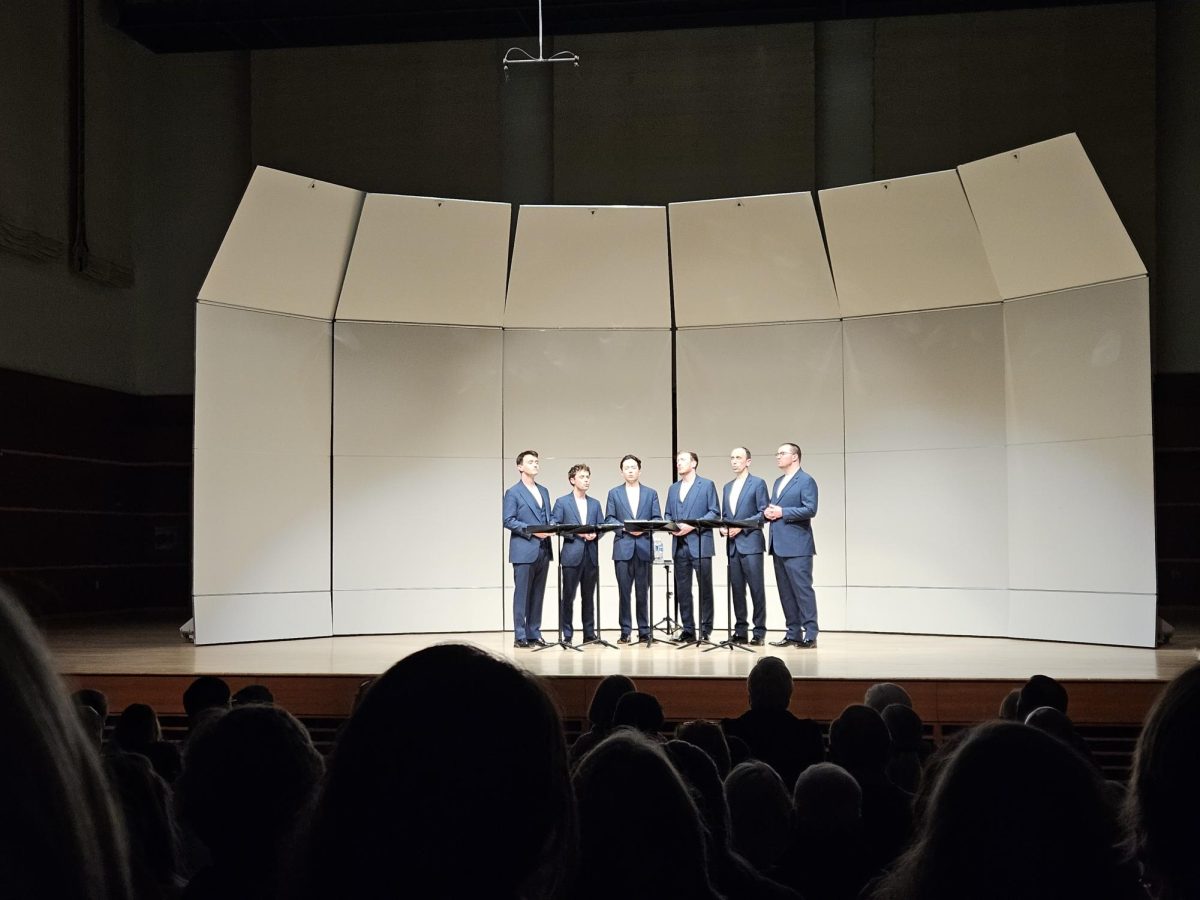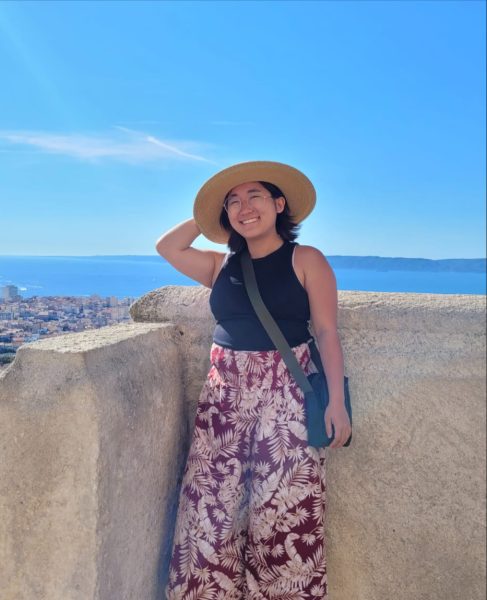Since Jan. 11, haunting dreamlike images of bones and distorted bodies have lined the walls of Washington and Lee University’s Staniar Gallery.
This latest exhibit celebrates the 100th anniversary of the surrealist movement with 44 of the original etchings Salvador Dalí created for Compte de Lautréamont’s novel, “Les Chants de Maldoror.”
At the center of the exhibit stands a sewing machine accompanied by a quote by the French author that captures the essence of surrealist movement: “As beautiful as the change encounter on a dissecting table of a sewing machine and an umbrella.”
Published in the late 19th century, “Les Chants de Maldoror” (The Songs of Maldoror) is a long prose poem centering around the violent and immoral character of Maldoror as he wreaks havoc against the world.
The novel inspired many surrealist artists like Dalí through its absurdity and discussion of crime, prostitution, and distrust of God and humanity in its many verses.
Eliott King, associate professor of art history and co-curator of the exhibit, called the novel a foundational text for surrealists, describing surrealism as an exploration of the subconscious.
“[The subconscious] is where real interesting work is. That’s where creativity is,” King said.
W&L received the unique opportunity to house all 44 of the original prints in partnership with Virginia Museum of Fine Arts (VMFA) chief curator Micheal Taylor.
There are only two copies of the original prints in the world – others are photocopies. Additionally, the exhibit contains two more prints than the Salvador Dalí Foundation in Spain, King said.
Taylor said he discovered the original prints in a stroke of good luck.
The prints originally belonged to the master printer Dalí commissioned to print his etching. After the master printer died, his widow put it up for auction and miscataloged it.
“I went in and realized how different these prints were to some of the other Maldoros pieces,” Taylor said.
In surrealist fashion, Dalí’s etchings do not illustrate what occurred in the novel. Instead, he created images based on what he felt while reading the text.
Because Dalí did not tie himself to what was written in the text, several recurring figures and ideas made their way into his etchings.
Some of these recurring figures are the praying couple from Jean-François Millet’s “The Angelus,” Napoleon, and the sewing machine.
Taylor and King decided to highlight Dalí’s fixation on “The Angelus” through the exhibit, providing an image of the original painting beside the etchings it inspired.
While the painting, which depicts two peasants praying in a field over a basket of potatoes after a harvest, is widely interpreted as a symbol of piety and religious devotion, Dalí insisted the painting represents grief or eroticism.
He said that hidden below the surface of the field was a small coffin containing the couple’s child and that the painting was a depiction of a funeral, not a thanking prayer for harvest.
At his insistence, the Louvre performed an X-ray of the painting, which revealed depictions of a box beneath the earth that had been painted over, supporting Dalí’s theory.
Taylor and King describe Dalí’s unique method of creating and interpreting art as the Paranoiac-critical method.
This method requires people to view art as if they were a paranoid person. People who use the paranoiac-critical method view or create images and figures in art that aren’t quite there, and it asks people to interrogate why they see these things.
“It’s almost trying to crack a hole into the universe and see a different reality,” Taylor said.
Aisy Fram, ’27, said she found the exhibit amazing because visiting the exhibit felt like a once-in-a-lifetime opportunity.
“I never thought that we would have such an insane exhibit at such a small school like this,” she said.
While King and Taylor created this exhibit to celebrate Dalí and the surrealist movement, they also acknowledged some of the issues that existed within the movement.
King included a replica of famous female surrealist Meret Oppenheim’s “Table with Bird’s Feet” in the exhibit to acknowledge the gender disparity within the surrealist movement.
“Surrealism is really tied to exploring the subconscious,” King said. “A lot of the male surrealists investigate it with images of women as various objects and fantasies.”
Dalí is no exception. The exhibit contains several graphic images of female bodies.
Within the public eye, men dominate the surrealist movement. While there were plenty of female surrealist artists, King said they were largely overlooked in the movement’s history.
“I felt like showing [the exhibit] without any acknowledgment [toward female artists] perpetuates this mythology of, ‘Oh, the surrealists were all men with these sex fantasies,’” King said.
The Stanier Gallery is now an institutional partner of VMFA. In the future, Taylor hopes to share more unique and impressive exhibits with the gallery.
The exhibit will be displayed to the public until Feb. 8.










